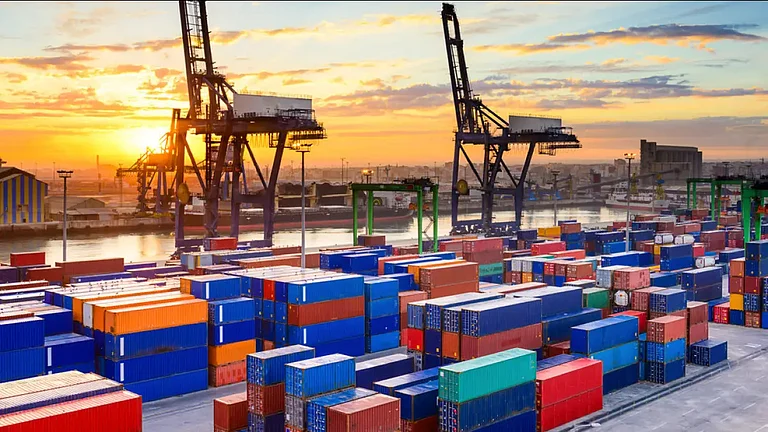Artificial intelligence (AI) has revolutionized how markets function worldwide, and the world of cryptocurrency is no exception. Now, trading robots, forecast programs, and computer-controlled systems control exchanges — scanning data, making trades, and controlling portfolios with lightning speed and accuracy. But as AI has made markets more complex, human traders continue to be an indispensable component of the financial system.
This article explores the continuing roles that human traders play in AI-driven systems, especially in crypto markets. We’ll examine how humans contribute to strategy development, oversight, contextual understanding, and ethical governance — areas where machines alone still struggle. In the middle sections, we’ll also see how human insight interacts with crypto signals, balancing algorithmic precision with judgment and intuition.
The goal is to know how human and AI complement, not compete — merging technological efficiency with emotional intelligence, creativity, and contextual awareness.
The Emergence of AI in Contemporary Trading
Artificial intelligence-based systems have become the foundation of contemporary financial markets. Speed, accuracy, and scalability are their biggest strengths — features necessary in quick-moving crypto markets that are open 24/7.
Here's why AI has turned out to be so critical in trading:
Processing power: AI systems are able to process millions of data points every second — price charts, blockchain information, social media sentiment, and transaction history.
Emotion-free action: Algorithms decide without emotional influences like greed or fear.
Automated speed: Trades are executed in milliseconds, taking advantage of even minute price movements.
Back-testing and optimisation: Thousands of scenarios are able to be simulated by AI to determine the most profitable parameters.
Scalability: AI has the capacity to watch various exchanges and tokens all at once, which is perfect for the 24/7 crypto environment.
However, as effective as AI is, it isn't completely autonomous. Patterns in data can deceive, black swan events can derail models, and emotions continue to play a role when deciphering unstructured environments. That's where people come in.
Why Human Traders Still Matter
Even in the age of AI, human traders play important tasks that computers cannot. These tasks belong to a number of broad categories:
Strategic Guidance and Structure
Humans set the mission of trading — whether the intent is investment over the long term, arbitrage in the short term, or risk-hedging. Traders architect the structure that governs how an AI system must act. They determine:
What markets to enter into
What risk level to adopt
What returns are achievable
How much automation to permit
An algorithm may perform well, but it won't decide why and when a specific approach is best suited to market conditions.
Contextual and Qualitative Analysis
Machine learning can recognize patterns, but it has no clue regarding context. Human traders interpret macroeconomic fundamentals, political developments, project fundamentals, and psychology of investors — all of which influence prices of cryptocurrencies.
For example, an AI can detect that Bitcoin is declining in price, but only a human can determine the reasons for it being short-term profit-taking, a regulatory statement, or a worldwide liquidity crisis.
Risk Oversight and Exception Handling
Markets don't always behave as they did before. When unexpected events happen — like a hack on an exchange, a flash crash, or a ban from government — humans need to take control of automated systems. Traders become safety controllers, preventing the algorithm from spiraling into expensive mistakes.
Ethical and Regulatory Responsibility
AI works within the bounds it's programmed with. However, legal compliance, ethical business practices, and protecting investors are inherently human aspects. Traders need to ensure that automated systems comply with KYC standards, refrain from manipulative behavior, and conform to regulatory rules.
Innovation and Continuous Learning
Humans also optimize AI. Humans review trading results, identify inefficiencies, and incorporate new data feeds. Being able to fine-tune strategies based on new technologies — like DeFi memes, tokenomics, or on-chain indicators — is a human thing.
The Role of Human Traders in the Age of Crypto Signals
At the center of such human-AI partnership is one of the busiest automation hotspots — crypto signals. Such signals are algorithmically created notifications that indicate possible trade opportunities either through technical indicators, sentiment on the market, or AI forecasts.
AI systems can create these signals through machine learning models designed to operate based on past data. But it is human intelligence that converts these signals into decisions.
Human traders:
Verify the accuracy of crypto signals prior to taking action on them.
Decipher if the signal aligns with the general market sentiment or prevailing stories.
Integrate various signals from multiple sources to create a robust strategy.
Risk-adjust, timing-adjust, and exposure-adjust.
For instance, a bot might give an AI-generated buy signal for Ethereum when using moving averages. But a human trader, realizing there is some SEC decision on the horizon or a big network upgrade, can decide to hold off on execution or adjust size accordingly.
Crypto signals are thus not orders, but instruments — and human traders are still the last word in taking decisions on interpreting and utilizing them.
Examples of Human Judgment in Real Life
In the 2020–2021 bull run: Thousands of trades per minute were executed by AI bots, but it was human traders who spotted overbought levels and anticipated corrections.
In shock crashes: Automated systems could keep selling, fueling fear. Humans, on the other hand, can spot long-term value and tactfully buy dips.
When exchanges go down: Only humans can determine whether to transfer funds, halt bots, or hedge via other instruments.
They show that whereas efficiency is the area where automation can excel, stability and adaptability continue to depend upon human instinct.
Pros and Cons of Keeping Humans in AI Systems
Aspect | Pros of Human Involvement | Cons of Human Involvement |
Decision-Making | Handles unexpected events interprets context | Slower than algorithms may carry bias |
Innovation | Adapts to new trends introduces creativity | Can be inconsistent across traders |
Risk Management | Provides manual control ethical oversight | Human error may still occur |
Compliance | Ensures adherence to regulations | Adds operational complexity |
The key is balance: over-reliance on automation can create systemic risks, while ignoring AI limits efficiency. The optimal system allows AI to do the heavy lifting and humans to handle the exceptions, creativity, and governance.
How to Integrate Humans Effectively in AI Trading Systems
To build a robust AI-human trading environment, firms and traders should follow these steps:
Set clear objectives: Define your risk appetite, profit targets, and strategy type.
Choose the right AI tool: Select algorithms aligned with your trading goals (e.g., scalping bots, arbitrage systems).
Monitor crypto signals: Evaluate multiple signals for accuracy, not just one source.
Establish human override protocols: Decide when manual intervention is necessary.
Review performance periodically: Humans should analyse results weekly or monthly and recalibrate algorithms.
Ensure compliance: Keep human oversight for audit trails, reporting, and regulatory adherence.
Educate and upskill: Human traders should understand AI logic — its inputs, outputs, and limitations.
These steps allow humans to retain control and accountability while leveraging AI’s efficiency.
The Future of Human Traders in AI Markets
As technology advances, the trader’s role will continue evolving:
From manual executors to strategic overseers — focusing on data interpretation and ethical decision-making.
From reacting to predicting — using AI insights proactively rather than reactively.
From emotion-driven to evidence-driven — balancing intuition with data validation.
AI won’t replace human traders; it will redefine them. In crypto markets especially, where volatility and sentiment dominate, human adaptability will always be an edge.
In the long run, traders who blend algorithmic accuracy with human insight will outperform both pure bots and purely manual methods.
Conclusion
In AI-driven crypto trading, machines handle speed, precision, and scalability — but humans deliver context, strategy, and judgment. Both are essential. The most effective systems are collaborative, not competitive.
Human traders remain the architects, interpreters, and ethical anchors of modern trading systems. They design the logic that AI follows, oversee performance, and adapt when markets defy prediction. As crypto evolves, human intelligence — guided by technology, not replaced by it — will continue to define success.
AI may dominate the data, but humans will always define the direction
Frequently Asked Questions (FAQs)
Q1: Can AI fully replace human traders in crypto markets?
No. While AI can execute faster and process more data, it cannot interpret sudden social, political, or emotional factors that drive the crypto market. Human oversight ensures adaptability and safety.
Q2: What are crypto signals, and how should traders use them?
Crypto signals are algorithm-generated trading alerts. Traders should not follow them blindly; instead, they should validate them using technical and contextual analysis before acting.
Q3: Why do human traders remain vital for AI systems?
Humans provide strategy, context, creativity, and accountability — all of which AI lacks. They ensure systems are used responsibly and remain aligned with broader objectives.
Q4: What risks arise from removing human oversight?
Without humans, AI systems can overreact to anomalies, create flash crashes, or amplify volatility. The absence of ethical judgment and compliance also poses serious regulatory risks.
Q5: How can traders prepare for an AI-dominated future?
By learning how algorithms work, improving analytical skills, and focusing on strategic thinking rather than repetitive execution.

























